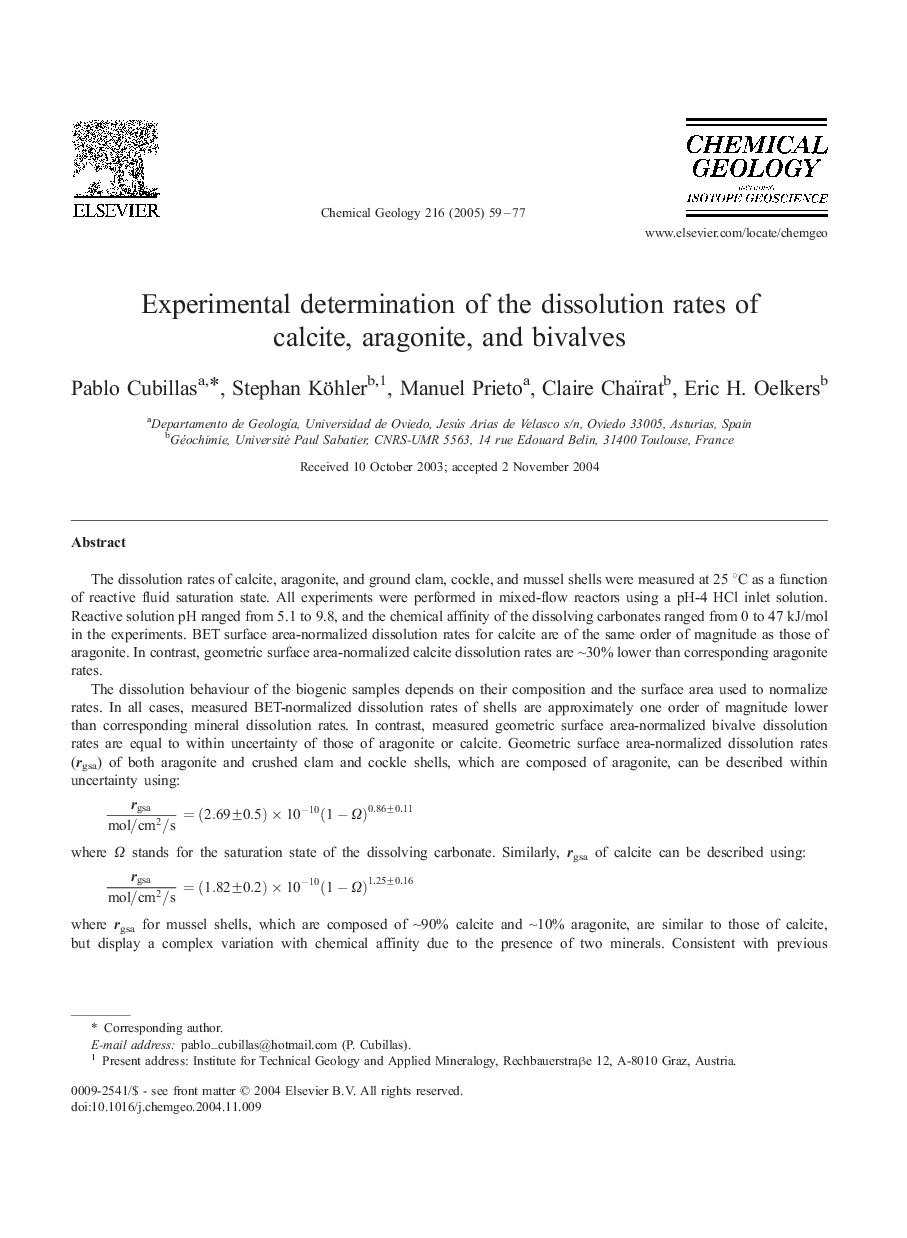| Article ID | Journal | Published Year | Pages | File Type |
|---|---|---|---|---|
| 9529124 | Chemical Geology | 2005 | 19 Pages |
Abstract
The dissolution behaviour of the biogenic samples depends on their composition and the surface area used to normalize rates. In all cases, measured BET-normalized dissolution rates of shells are approximately one order of magnitude lower than corresponding mineral dissolution rates. In contrast, measured geometric surface area-normalized bivalve dissolution rates are equal to within uncertainty of those of aragonite or calcite. Geometric surface area-normalized dissolution rates (rgsa) of both aragonite and crushed clam and cockle shells, which are composed of aragonite, can be described within uncertainty using:rgsamol/cm2/s=(2.69±0.5)Ã10â10(1âΩ)0.86±0.11where Ω stands for the saturation state of the dissolving carbonate. Similarly, rgsa of calcite can be described using:rgsamol/cm2/s=(1.82±0.2)Ã10â10(1âΩ)1.25±0.16where rgsa for mussel shells, which are composed of â¼90% calcite and â¼10% aragonite, are similar to those of calcite, but display a complex variation with chemical affinity due to the presence of two minerals. Consistent with previous studies, rgsa is found to be accurately described as a function of saturation index independent of pH at neutral to basic conditions.
Related Topics
Physical Sciences and Engineering
Earth and Planetary Sciences
Geochemistry and Petrology
Authors
Pablo Cubillas, Stephan Köhler, Manuel Prieto, Claire Chaïrat, Eric H. Oelkers,
